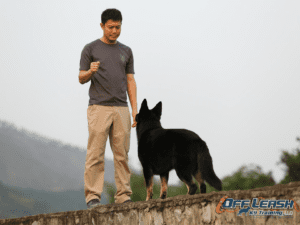Understanding Canine Emotions and Their Relationship to Owners Emotional State: Learn how dogs form deep emotional bonds with their owners, mirroring their emotional states, and discover how understanding canine emotions can foster a harmonious relationship and enhance the emotional connection between dogs and their owners.
Introduction to Canine Emotions and Owner’s Emotional State
Dogs have long been celebrated as man’s best friend, not merely for their unwavering loyalty and companionship but also for their incredible sensitivity to human emotions. These remarkable animals possess an innate ability to sense and reflect the emotional states of their owners, often acting as a barometer for feelings such as joy, sadness, anxiety, and excitement. This mirroring of emotions is not a simple parlor trick but a manifestation of the deep bond shared between canines and humans. It underscores the importance of understanding canine emotions to foster a harmonious and caring relationship that benefits both the dog and its owner. The emotional connection that forms between dogs and humans goes beyond mere coexistence; it’s a dynamic interplay that significantly impacts the well-being, behavior, and overall happiness of both parties. Recognizing and nurturing this connection is crucial for any dog owner who seeks to develop a deeper bond with their furry companion.
In delving into the realm of canine emotions, it becomes clear that dogs do more than just respond to our moods—they actively participate in an emotional dance with us, often taking the lead based on what they perceive from our actions and reactions. This symbiotic relationship, where emotions are freely exchanged and shared, forms the cornerstone of the profound companionship that dogs offer. It’s a testament to the evolutionary journey that has closely intertwined the lives of dogs and humans over thousands of years. By engaging with and understanding the emotional cues of our canine friends, we not only enhance the quality of life for our pets but also enrich our own emotional experiences, creating a loop of mutual care and understanding that deepens the bond between dog and owner. This intricate dance of emotions underscores why the emotional connection between dogs and their humans is considered one of the most unique and enriching aspects of the human-animal bond.
The Science Behind Canine Emotions

Beyond hormonal influences, dogs demonstrate a remarkable capacity for emotional contagion, echoing the feelings and emotional states of their human companions. This phenomenon is not merely a reflection of the strong bond shared but also indicates dogs’ sophisticated cognitive ability to perceive and react to human emotions. Dogs can discern happiness, sadness, and fear in their owners through cues such as facial expressions, body language, and vocal tones, responding with appropriate behaviors that often provide comfort and empathy. For instance, a dog might snuggle up to their owner during times of sadness or wag their tail and exhibit playful behaviors when sensing happiness. This empathetic response not only offers emotional support but also cements the profound and reciprocal emotional connection shared between dogs and their owners. Through understanding these emotional dynamics, individuals can further appreciate the depth of their bond with their canine companions, paving the way for an even more enriching and harmonious relationship.
How Dogs Perceive and React to Human Emotions
Dogs possess an extraordinary ability to sense and react to the emotions of their human companions, thanks to their keen observation of sensory cues such as facial expressions, body posture, and the tone of voice. This remarkable sensitivity enables them to distinguish between a wide range of human emotions, from joy and contentment to sadness and anxiety. For example, when a dog notices its owner displaying signs of distress, such as crying or a downturned mouth, it may respond with behaviors aimed at providing comfort, like cuddling or gently placing its head on the owner’s lap. This intuitive capacity to recognize and react to human emotional states underscores the depth of the bond shared between dogs and humans, illustrating how these animals are not merely pets but empathetic companions tuned into our emotional worlds.
Moreover, dogs’ responses to human emotions are not limited to simple observation; they actively engage with their owners’ emotional cues through a combination of visual, auditory, and olfactory signals. A dog may become excited and wag its tail more vigorously when it hears the happy tone in its owner’s voice or may become subdued upon picking up the scent of stress hormones present in human sweat. These interactions go beyond mere companionship, fostering a deep, reciprocal emotional connection that benefits both dogs and their owners. By learning to read and appropriately respond to these cues, dog owners can further enhance this emotional bond, creating a nurturing environment that supports mutual well-being and understanding.
Interpreting Dog Emotions and Body Language
Interpreting the subtle nuances of dog emotions and body language is key to developing a deep, empathetic bond with your furry friend. Dogs communicate their feelings through a variety of signals, including the position of their ears and tail, the intensity and direction of their gaze, and their overall body posture. For instance, a dog displaying soft eyes, a gently wagging tail at mid-height, and a relaxed body posture is likely feeling happy and content, inviting interaction. Conversely, a dog with ears pinned back, a tail tucked between the legs, and avoidance of eye contact might be experiencing fear or anxiety. These cues, while sometimes subtle, are the dog’s way of expressing their emotional state, and understanding them allows owners to respond more effectively to their pet’s needs and emotions.
Moreover, specific behaviors such as licking, yawning, or rolling over can offer further insight into a dog’s feelings and intentions. A dog that licks its lips or yawns might be feeling anxious or stressed in a situation, signaling to their owner that they need reassurance or a change in environment. On the other hand, a dog that rolls over exposing its belly is demonstrating trust and submission, often in a playful context. Recognizing these signals is not only essential for effective communication but also for building a relationship based on mutual understanding and respect.
The Bidirectional Relationship of Emotional Contagion
The concept of emotional contagion between dogs and humans extends beyond simple mimicry; it is a complex, bidirectional flow of emotions that profoundly impacts the dynamics of their relationship. This means that not only can dogs pick up on and mirror the emotional states of their human counterparts, but humans can also feel and respond to the emotions exhibited by their dogs. Such interplay of emotions reveals the intricate and deep-seated bond that forms between dogs and their owners, where each party’s mood can significantly influence the other. For instance, a dog sensing its owner’s sadness may offer comfort by cuddling close, which in turn can evoke feelings of love and gratitude in the owner, thereby uplifting their spirits.
Understanding this reciprocal exchange of emotions underscores the importance of nurturing a positive emotional environment for both dogs and their owners. It highlights the role of empathy in strengthening the bond between the two, where recognizing and responding to each other’s emotional cues becomes a foundation for a deeper connection.
Tips for Strengthening the Emotional Connection with Your Dog
Fostering a strong emotional bond with your dog is not just about spending time together; it’s about creating meaningful experiences that resonate with both of you. Activities that stimulate your dog’s senses and intellect, such as interactive games, long walks in nature, or even agility training, can significantly contribute to their happiness and sense of security. These activities not only provide exercise and mental stimulation but also offer ample opportunities for positive reinforcement, which is critical in reinforcing desirable behaviors and deepening your connection. For example, praising and rewarding your dog during a game of fetch or a training session reinforces their good behavior and strengthens their association of joy and approval with being in your presence.
Conclusion: Nurturing Emotional Bonds with Your Canine Companion
The emotional bond shared between dogs and their owners transcends mere companionship, evolving into a deep, mutually beneficial relationship that significantly enhances the quality of life for both. It is through the careful observation and interpretation of canine emotions that owners can truly connect with their pets, fostering an environment of empathy, understanding, and unconditional love. This nuanced understanding enables owners to respond more effectively to their dog’s needs, creating a stronger foundation of trust and companionship. It’s important to remember that this emotional connection is a journey, one that flourishes with patience, consistent communication, and shared experiences.
For those seeking to deepen the emotional connection with their canine companion, Off Leash K9 Training of Phoenix offers a pathway to achieving a more harmonious and understanding relationship. With their expertise in recognizing and harnessing the power of canine emotions, they provide tailored training sessions that not only address obedience and behavior but also focus on enhancing the emotional bond between dog and owner. By incorporating advanced training techniques and understanding the pivotal role emotions play in the human-canine relationship, Off Leash K9 Training helps to unlock a new level of mutual respect and affection. Embark on this rewarding journey by visiting Off Leash K9 Training of Phoenix for further details on how you can strengthen the cherished bond with your furry friend.




